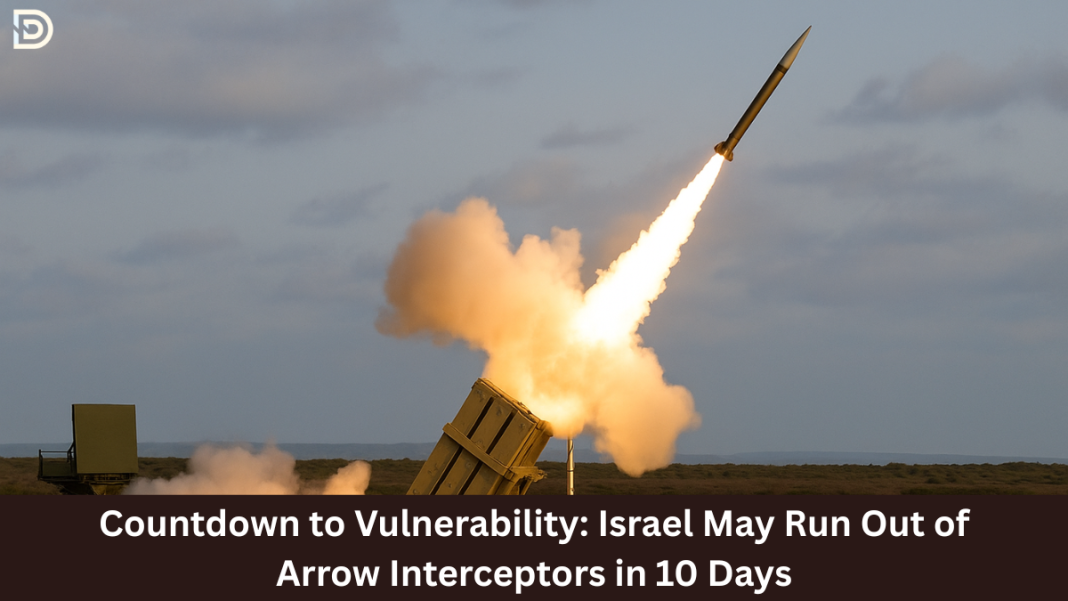Israel is facing a serious problem. The country is running low on its Arrow missile interceptors, which are used to stop dangerous long-range missiles from Iran.
Arrow Interceptors in Trouble
A report from the Wall Street Journal revealed that even the United States has known about this shortage for months. The situation has raised alarms because these interceptors are very important in protecting cities and people from attacks.
The Arrow system is one of Israel’s main defenses against ballistic missiles. These missiles fly very fast and can cause massive destruction. Over the past few days, Iran has launched more than 370 missiles and hundreds of drones toward Israel. These attacks started after Israel carried out a large operation targeting Iran’s missile systems and nuclear facilities.
So far, missile attacks have killed 24 people in Israel and injured more than 500 others. Missiles caused many of these injuries and deaths because Israel could not stop all of them. Although Israel allows some missiles to fall in open areas on purpose, managing the situation becomes much harder when attackers launch too many missiles at once.
US Support Also Under Pressure
The United States has been helping Israel by sending its own missile interceptors, but now the US is also worried. There are only so many interceptors available, and sending too many to Israel may leave the US short on its own supplies. According to a report, American defense officials are now concerned that they might be using up their own interceptor stockpiles too fast.
A person familiar with the situation told The Washington Post that Israel may only be able to keep defending itself at the current pace for about 10 to 12 more days unless the US sends more help. This estimate is based on how fast the missiles are being used and the ongoing attacks from Iran. Already, there are signs that Israel will soon have to make difficult choices about which incoming missiles to stop and which ones to let fall.
Israeli defense systems are already struggling to keep up with the volume of missiles being launched. This is especially true when the attacks focus on crowded cities. When missiles are not intercepted, they have a greater chance of hitting homes, schools, or power plants. That makes the few missiles that do get through far more dangerous.
Despite the reports, Israeli officials have not officially admitted to any shortage of interceptors. The Israeli military has only said that it is ready to face any situation, though it does not comment on exact numbers or weapons stocks.
The Bigger Picture in the Region
The Arrow missile system is not the only protection Israel has. Israel uses other systems, like the Iron Dome, to counter different types of threats, such as rockets and short-range attacks. But the Arrow system specifically targets long-range ballistic missiles, which are more powerful and harder to shoot down.
The United States has more advanced systems in the Middle East, such as Patriot missiles and THAAD systems. These can also stop ballistic missiles, and US Navy ships have helped by shooting down projectiles from the sea. However, these systems also have limited supplies, and they are expensive to use.
Iran Hits Back Hard: Zolfaghar Missiles, Shahed Drones Pound Israeli Targets After Air Strikes
Other countries in the region do not have the same ability to shoot down ballistic missiles. These missiles travel very quickly—taking only about 10 minutes to reach their target. That means only the most advanced systems can react in time to stop them.
Even though Israel has managed to stop most of the missiles from Iran in recent attacks, the ones that did get through have caused damage and harm. In earlier attacks during April and October 2024, most of the missiles were aimed at a military base in a less populated area. This time, the missiles are heading toward big cities, increasing the chances of injuries and destruction.
Israel says that it planned its current operation in Iran several months ago and that it has good information about Iran’s missile systems. As part of this operation, the Israeli military says it has already destroyed around 40 percent of Iran’s missile launchers. This shows how intense the fighting has become and how much effort is going into stopping Iran’s missile capabilities.
Despite these efforts, the pressure on Israel’s defenses is growing. The interceptor shortage, combined with large missile barrages, has pushed the Arrow system to its limits. Both Israel and the US are now facing the challenge of defending against missile threats while managing their limited missile supplies.
